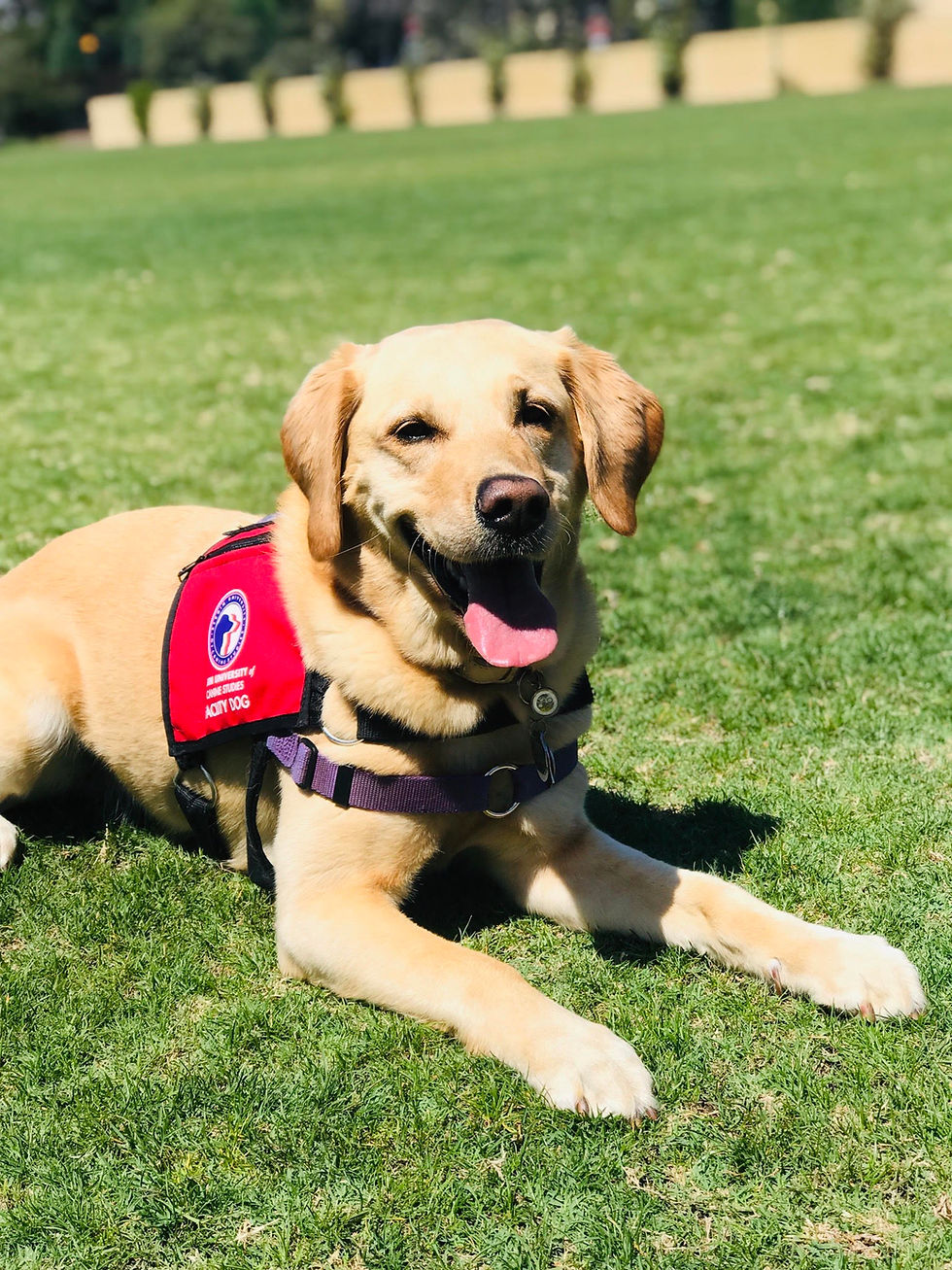Good Dog! Board Member, Quiara and Facility Dog, Nelly
- Macy Burr
- Jun 22, 2023
- 3 min read
Through the use of everyday activities (occupations), occupational therapists promote health and well-being for those they work with (The American Occupational Therapy Association, 2023). Occupational therapists may help children with disabilities participate in school, help an individual overcoming an injury be able to participate in meaningful activities again, or they might recommend equipment or other adaptive strategies. Occupational therapists may also incorporate animals into therapy to enhance client motivation and participation which may result in faster progress towards goals.
Meet Quiara Smith, an occupational therapist with advanced training in several areas who is also a board member of Good Dog! Service Canines. Quiara has a wide range of experiences and skills in occupational therapy practice. Unique areas that she specializes in include animal-assisted therapy, infant massage, sensory integration, pelvic health, and children’s yoga. She is also well-versed in the administrative side of occupational therapy. Quiara has experience establishing and writing policies for animal-assisted therapy programs and is the owner of a private practice therapy clinic.

See Quiara’s blog post about facility dogs and animal-assisted therapy linked below:
Quiara Smith and her facility dog, Nelly completed training at Bergin College of Canine Studies. This is where she met Laura and Rick, founders of Good Dog! Service Canines. Nelly is a golden retriever/ labrador retriever mix. Nelly is the perfect match for Quiara. At the time of being matched with Nelly, Quiara was working at a hospital. Her facility dog needed to be able to have the skills necessary for working with children in an inpatient setting. Nelly demonstrated the capacity to work in this demanding environment, she met the competencies, could complete the required demands, and most importantly, she wanted to work.

Nelly has made such a significant impact in the settings in which she has worked. In the pediatric intensive care unit, the children are receiving emergent medical care for life-threatening reasons. This is anxiety provoking for both the child and their families. The power of the human-animal bond, especially when incorporating a specially trained dog like Nelly, is incredible. In these situations where anxiety levels are heightened, Nelly was so impactful. She provided emotional support to families when their children were in tough situations. Being able to pet Nelly and engage with her non-verbally had such a powerful effect during these awful times.

Nelly transitioned from working in the hospital to a private clinic with Quiara. In the private clinic, Nelly has continued to provide many benefits for the individuals who she engages with. She assists children with self-regulation and coping/calming for the nervous system. For children with pelvic health issues, the regulation nervous system plays an important role in improving therapy outcomes. Nelly assists with children learning calming and coping strategies by relating these concepts to Nelly’s regulation. For example, observing her breathe, provides an opportunity for children to learn about their own breathing patterns. Talking about Nelly’s body and how she’s feeling, allows for a more engaging discussion about the children’s bodies and how they’re feeling. Nelly has also been incorporated into sensory-motor activities. These have included obstacle courses, deep breathing with Nelly, brushing Nelly, and having her retrieve items during gross motor tasks.
Nelly also makes telehealth sessions for children experiencing pelvic health difficulties much more engaging. It can be very helpful to discuss Nelly’s toileting patterns to support children in also setting toileting routines. Nelly is the theme of each curriculum designed to meet the unique needs of the children that Quiara works with. Quiara reported that Nelly helps children stay accountable with their home programs and that the children are motivated to participate in therapy and do a good job to make Nelly proud. Nelly changes their mindset and perspective about the challenging tasks involved in occupational therapy.

Nelly is an amazing facility dog that has made positive impacts on many families that she has worked with. Nelly has special gifts and talents that have contributed to these positive outcomes of her work. Her favorite therapy activities include providing deep pressure through the “lay on” command to assist in calming, finding treats during obstacle courses, getting brushed, and getting petted. When she’s not working, she loves to sunbathe, play catch, and like many retrievers, she loves to eat.
References:
The American Occupational Therapy Association. (2023). What is occupational therapy? https://www.aota.org/about/what-is-ot
Opmerkingen